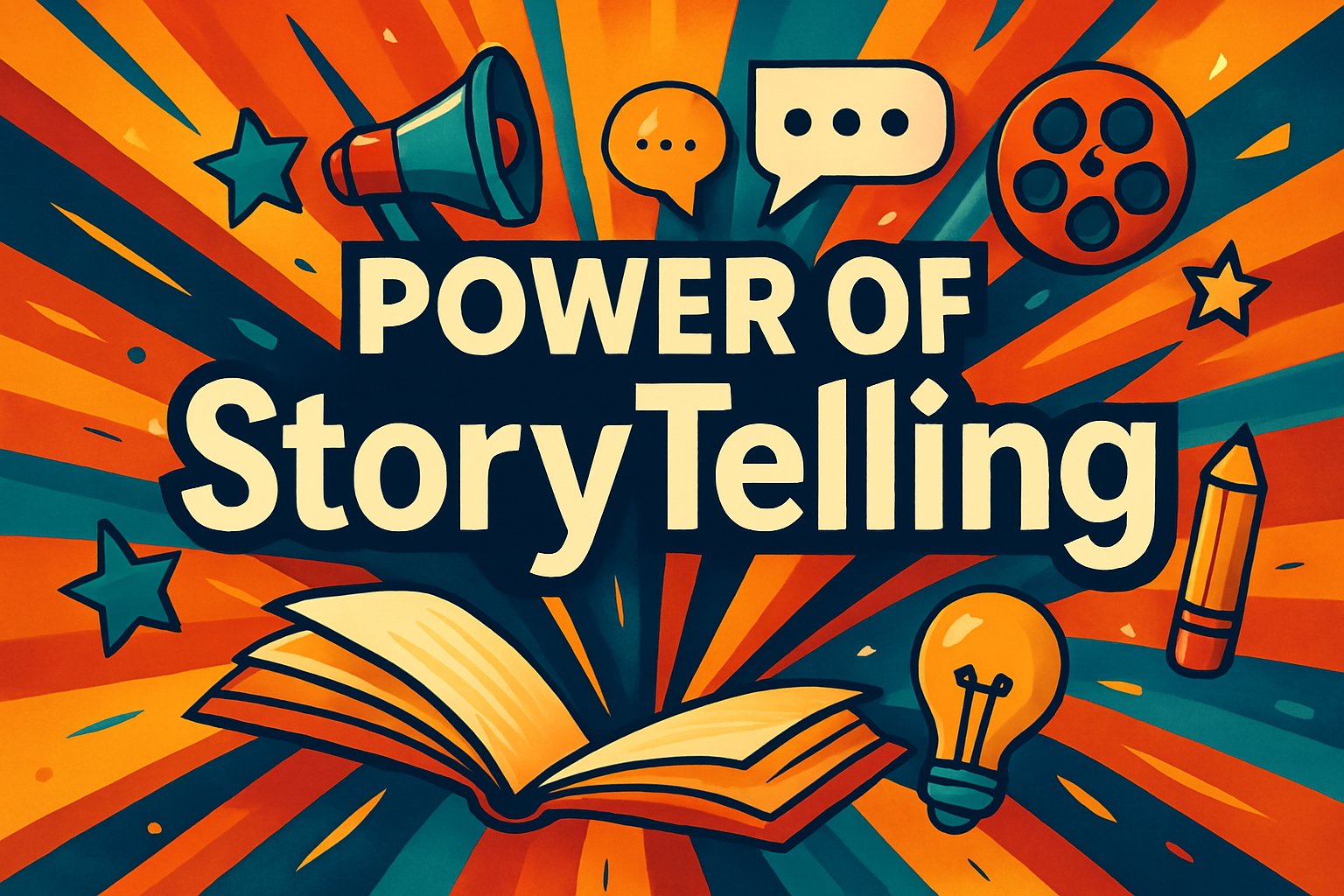Story telling can be a powerful component in a marketing strategy. It can be the driving force behind developing, and more importantly, establishing a brand that connects and resonates with your target audience.
The story you tell, and the method in which you use to weave that story throughout your marketing campaigns will be based on your overall goals but one thing remains the same:
Your story will be designed to introduce your brand to the world in a way that helps you stand out and apart from the competition.
Storytelling is a testament to our hard work; it highlights the efforts we’ve taken to create an outstanding brand, and it helps deliver larges pieces of content in a way that people can connect to.
It’s also the easiest way to express emotions and illustrate your commitment to providing value.
There’s nothing more powerful than a carefully crafted story that fulfills the needs of your core market.
The Art of Storytelling
With storytelling, you can design a highly-engaged marketing campaign that carries a strong focus. You’ll use storytelling to give people the information they want to hear to make the decision to follow your brand, purchase your products or connect with your platform.
Thankfully, there’s an easy structure to a creating a compelling storyline for your marketing campaign and it begins with utilizing a variety of delivery methods, including:
Visual and Content-Based:
Visual storytelling would include things like videos, presentations, Webinars or perhaps a series of episodes that bring your viewers on a journey.
Content based would include everything else, such as articles, blog posts, sales pages and so on.
It’s important to combine both storytelling methods into your marketing campaigns so you’re able to reach a broader audience. Some people prefer to watch video; others absorb information better in text form.
The anatomy of a successful storytelling campaign will also include a specific series of questions and answers. Here’s a quick overview of what you need to consider when designing your storytelling campaign.
Questions from your Audience:
This isn’t where you poll your market for their most burning questions, though that can be an effective strategy in coming up with a storyline that connects with your core audience. But another way to address questions without surveying your market begins with the questions you had when you first ventured in your niche.
Look at what questions your customers are already asking? What answers your competitors are providing? And how best to connect with your audience using language they best understand.
Establishing a Timeline:
This is where you draft your story arc around a marketing campaign. This story will tell your audience how you got from point A to B, why you created your brand (services/products), and how it exists to serve them.
It gives your story purpose and helps you stay aligned with your goals while remaining consistent with your campaigns. Laying the groundwork for a storytelling timeline is also important so that you’re able to
Personalization:
Your story needs to connect with your core audience and you do this by making it all about them. Rather than creating a generic storyline that simply highlights your brand, you need to embrace your audience by fostering a mindset that you understand what they need, desire and fear.
And finally,
Adaptation:
One story doesn’t fit all marketing channels, so you need to make sure you create stories that align with the platforms you use.
For example, if you plan to utilize social media, you’ll want to begin by uncovering key themes, trends and in-demand topics within those channels and then create a storyline around what has proven to be effective.
Facebook marketing is different than Instagram marketing and they cater to very specific audiences so you’ll want customize your storyline to better fit those viewers.
Instead of going straight for the sale, you need to think about how people communicate on those platforms, how they recommend products and services and how the market responds to different ad styles. Then you can create your own storytelling campaign so that it aligns with those networks.

About the Author
Mark Graham is The Performance Coach—a passionate leader, serious entrepreneur, and trusted advisor. With experience owning nine businesses across multiple industries and leading teams in top organizations, Mark brings real-world insight to every client interaction. As a Certified Professional Business Coach, Consultant, and Advisor, he’s committed to helping business owners achieve measurable, repeatable results. His mission is simple: elevate performance and drive growth that lasts.
Reach out to Mark @ 214.582.6262 or mark@theperformancecoach.biz

